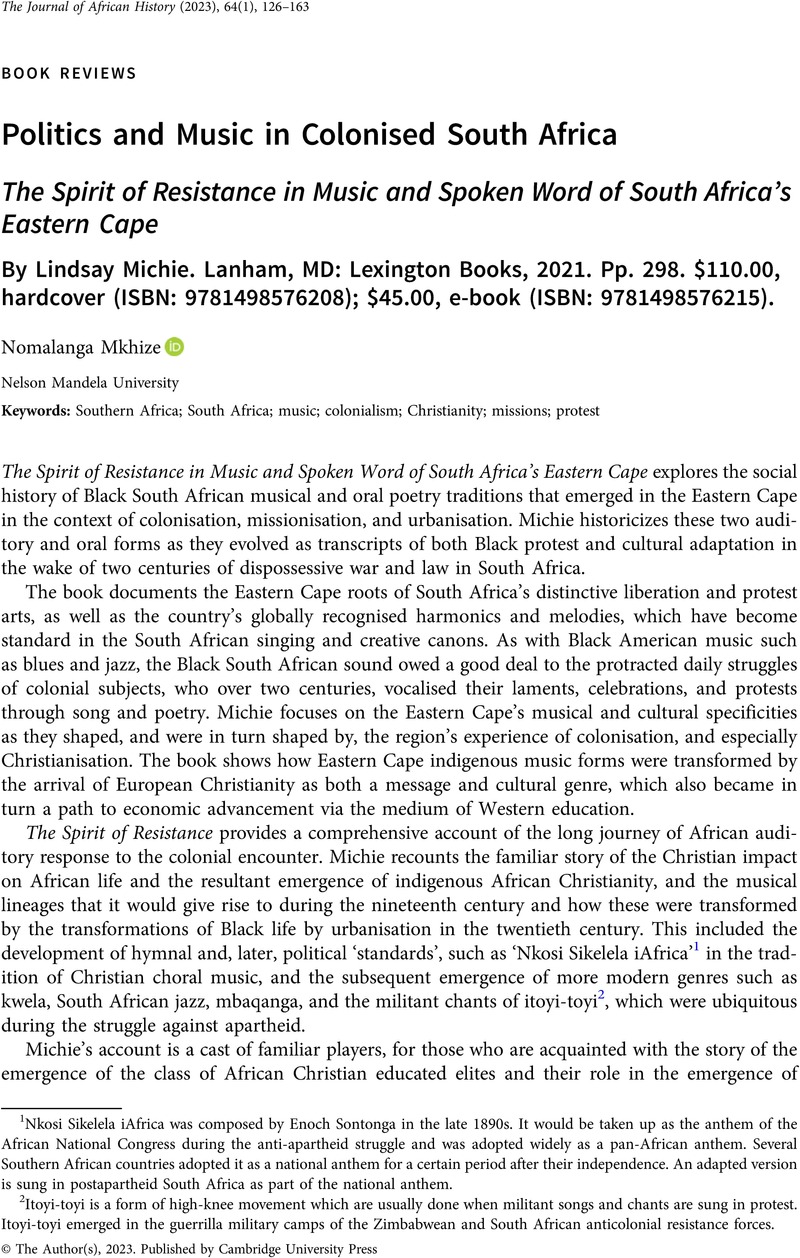No CrossRef data available.
Article contents
Politics and Music in Colonised South Africa - The Spirit of Resistance in Music and Spoken Word of South Africa's Eastern Cape By Lindsay Michie. Lanham, MD: Lexington Books, 2021. Pp. 298. $110.00, hardcover (ISBN: 9781498576208); $45.00, e-book (ISBN: 9781498576215).
Review products
Published online by Cambridge University Press: 21 April 2023
Abstract

- Type
- Book Review
- Information
- Copyright
- Copyright © The Author(s), 2023. Published by Cambridge University Press
References
1 Nkosi Sikelela iAfrica was composed by Enoch Sontonga in the late 1890s. It would be taken up as the anthem of the African National Congress during the anti-apartheid struggle and was adopted widely as a pan-African anthem. Several Southern African countries adopted it as a national anthem for a certain period after their independence. An adapted version is sung in postapartheid South Africa as part of the national anthem.
2 Itoyi-toyi is a form of high-knee movement which are usually done when militant songs and chants are sung in protest. Itoyi-toyi emerged in the guerrilla military camps of the Zimbabwean and South African anticolonial resistance forces.
3 The Opland Collection is a published series of compiled late nineteenth and early twentieth century isiXhosa texts, with annotations and translations. The collection emerges from the archive of the early African press as collected by Jeff Opland over decades. The texts include poetry, histories, letters to the editor, and other writings by key African intellectuals such as S. E. K Mqhayi. The collection spans several volumes and has become a key resources for students seeking primary source African writing.
4 Mafeje, A., ‘The role of the bard in a contemporary South African community’, Journal of African Languages, 6 (1967), 193–223Google Scholar.



